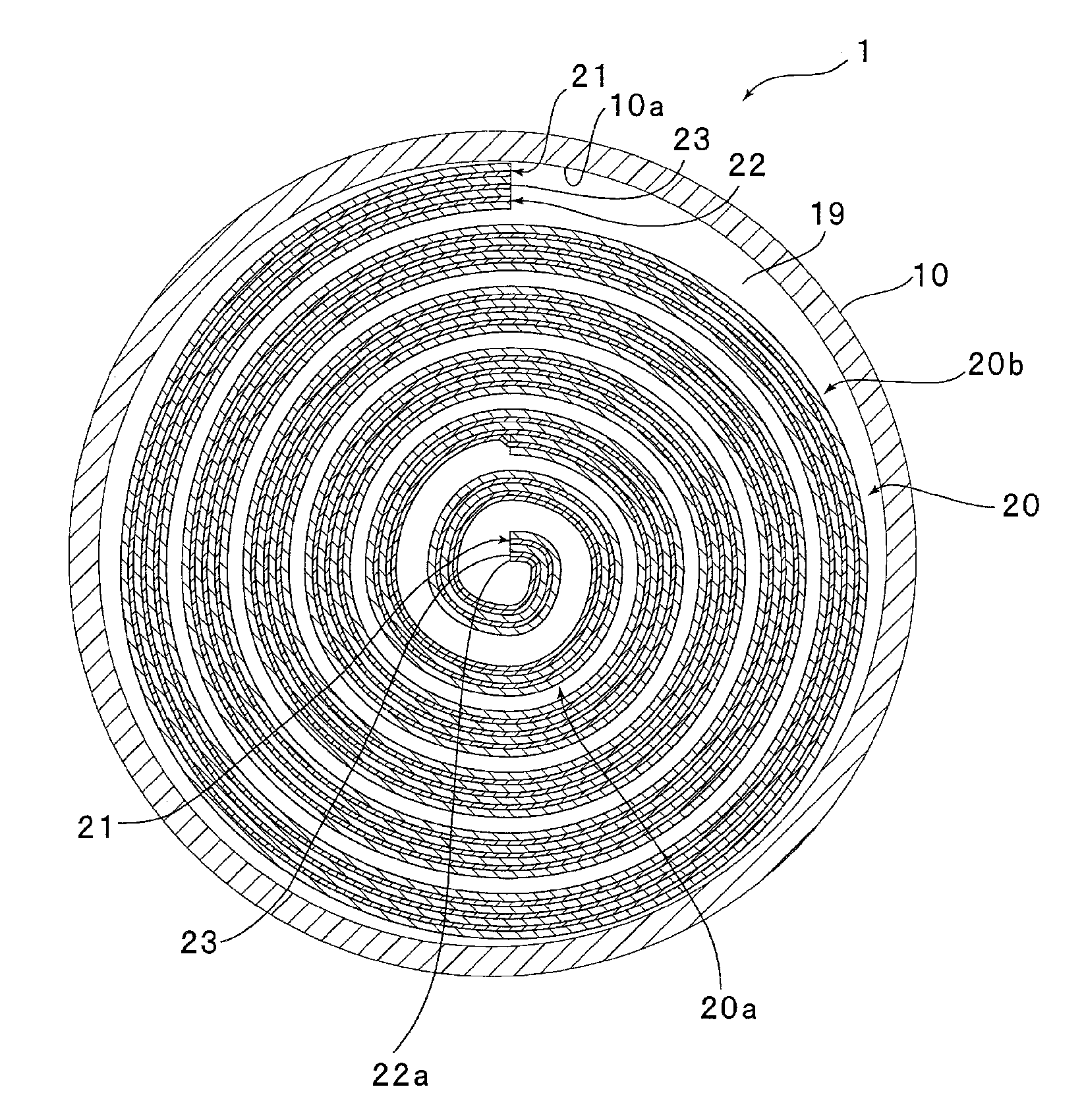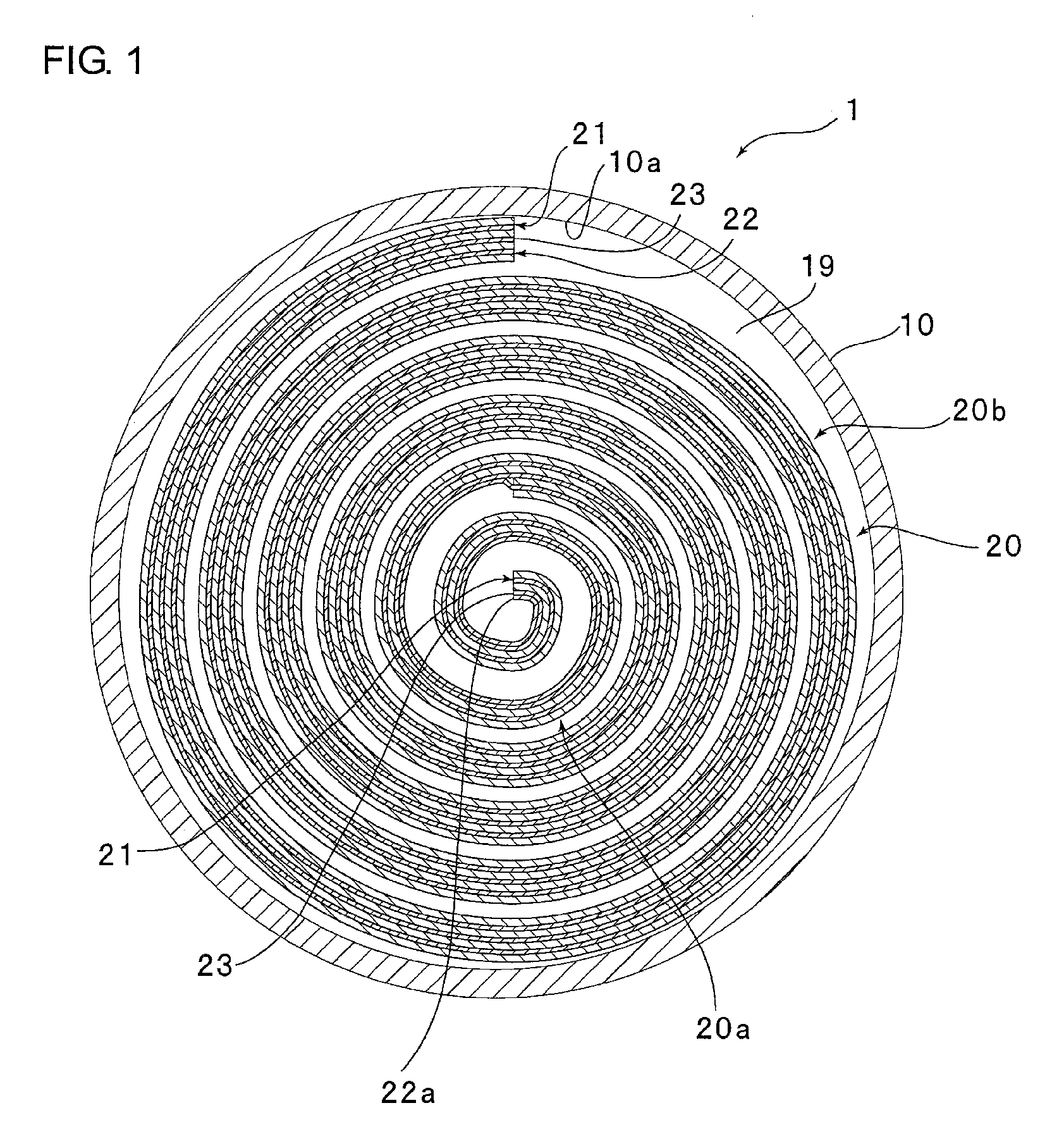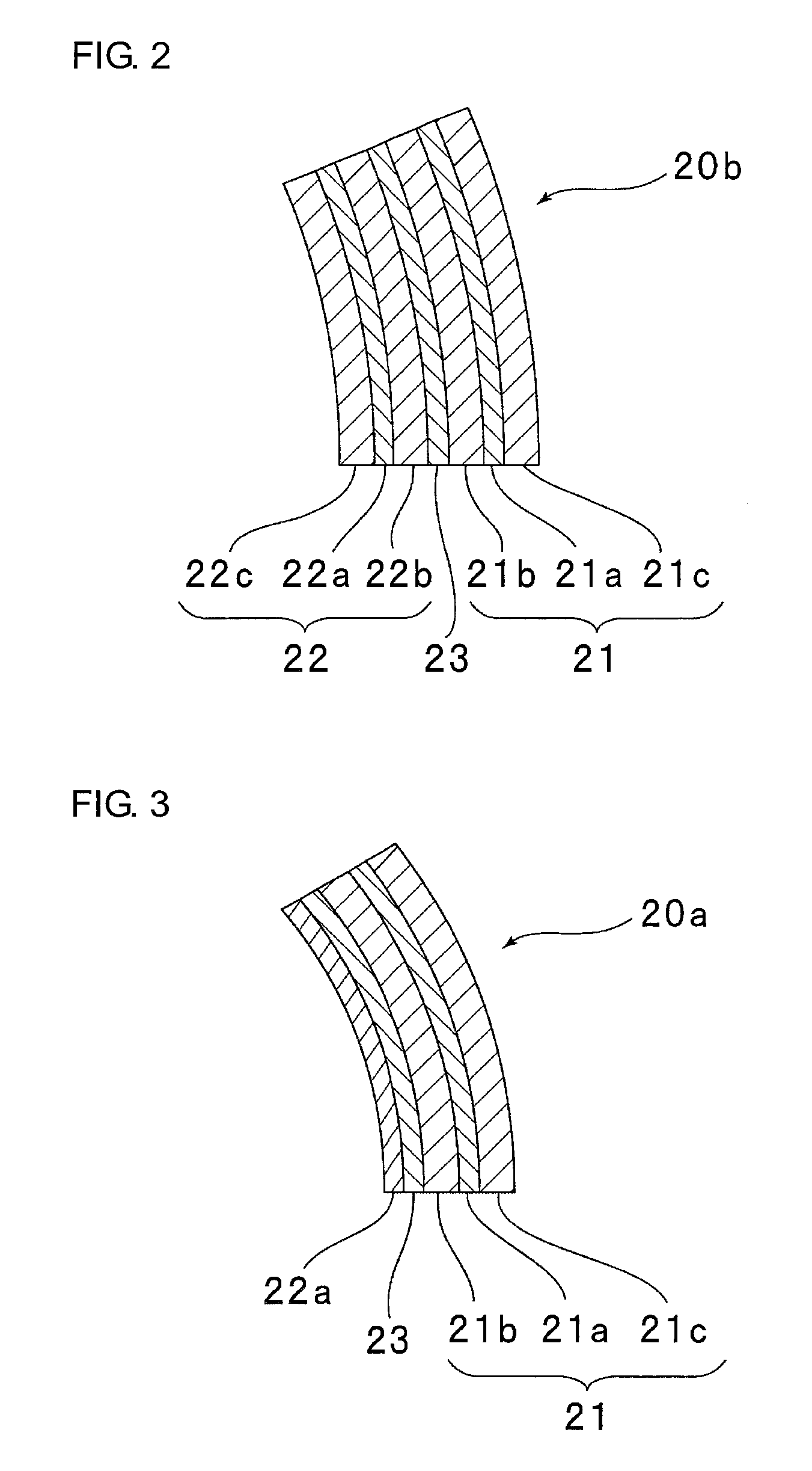Lithium ion secondary battery
a secondary battery and lithium ion technology, applied in the field of lithium ion secondary batteries, can solve the problems of affecting the charge/discharge characteristic of negative-electrode active materials capable of forming lithium alloys, such as silicon, and the volume change of negative-electrode active materials, so as to prevent electrical short circuits and reduce the effect of charge/discharge characteristics
- Summary
- Abstract
- Description
- Claims
- Application Information
AI Technical Summary
Benefits of technology
Problems solved by technology
Method used
Image
Examples
first embodiment
[0028]FIG. 1 is a schematic transverse cross-sectional view of a lithium ion secondary battery 1 according to this embodiment. Note that for convenience of drawing, the number of winding turns of the spirally wound electrode assembly in FIG. 1 is smaller than in reality. Furthermore, for convenience of drawing, each figure is represented as if a clearance existed between radially adjacent portions of the spirally wound electrode assembly. Actually, however, radially adjacent portions of the spirally wound electrode assembly are in contact with each other. Each figure is also represented as if a clearance also existed between the spirally wound electrode assembly and the urging part. Actually, however, the spirally wound electrode assembly and the urging part are located radially in contact with each other.
[0029]As shown in FIG. 1, the lithium ion secondary battery 1 includes a battery container 10. The battery container 10 is formed into an approximately cylindrical shape closed at ...
example 1
[0093]In Example 1, a cylindrical lithium ion secondary battery was produced using a negative electrode, a positive electrode and a nonaqueous electrolytic solution produced in the following manners. The produced lithium ion secondary battery was 12.8 mm in diameter and 37.7 mm in height.
[0094][Production of Negative Electrode]
[0095]First, a negative-electrode active material was produced in the following manner. A silicon core placed in a reduction furnace was heated to 800° C. by ohmic heating. Thereafter, a gas mixture of high-purity silane gas SiH4 and hydrogen gas was supplied into the reduction furnace to precipitate polycrystalline silicon on the surface of the silicon core, thereby producing a polycrystalline silicon mass. The polycrystalline silicon mass was ground and classified, thereby producing polycrystalline silicon particles having a purity of 99%. In this example, the polycrystalline silicon particles thus obtained were used as a negative-electrode active material. ...
examples 2 to 4
[0116]Lithium ion secondary batteries were produced and evaluated in the same manners as in Example 1 except that the respective numbers of winding turns of their urging parts were those shown in TABLE 1.
PUM
| Property | Measurement | Unit |
|---|---|---|
| thickness | aaaaa | aaaaa |
| thickness | aaaaa | aaaaa |
| diameter | aaaaa | aaaaa |
Abstract
Description
Claims
Application Information
 Login to View More
Login to View More - R&D
- Intellectual Property
- Life Sciences
- Materials
- Tech Scout
- Unparalleled Data Quality
- Higher Quality Content
- 60% Fewer Hallucinations
Browse by: Latest US Patents, China's latest patents, Technical Efficacy Thesaurus, Application Domain, Technology Topic, Popular Technical Reports.
© 2025 PatSnap. All rights reserved.Legal|Privacy policy|Modern Slavery Act Transparency Statement|Sitemap|About US| Contact US: help@patsnap.com



